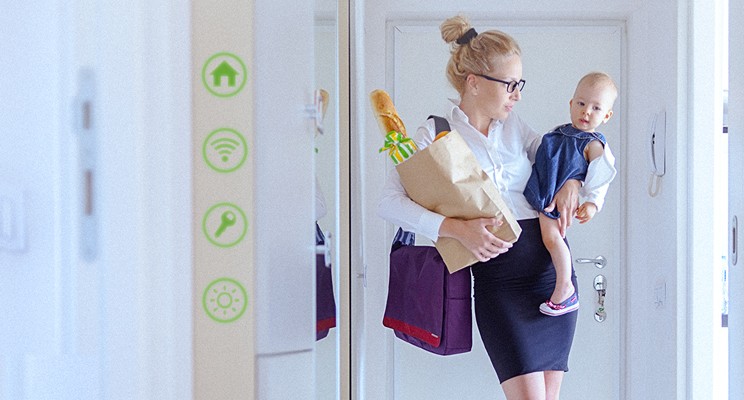
The Future of Voice Assistants in the Smart Home
It Comes Down to a Balance Between Automation (Locks, Lights, Etc.) and Asking Questions (How’s the Traffic?)
There's no doubt that voice assistants are popular. A recent report from Juniper Research estimates that there will be 8 billion devices with digital voice assistants in use by 2023, up from an estimated 2.5 billion at the end of last year.
Consumer electronics is a major driver for this growth: Parks Associates estimates that 47% of U.S. households with broadband will have smart speakers with voice assistants integrated into them by 2022. Controlling home entertainment is likely to be the primary use for these devices in the future, including turning the television on and off, changing stations and controlling volume.
These statistics completely resonate with me. Using my voice is a simple way to ask Alexa or Google to turn on a light or lock a door. However, with the increasing proliferation of connected devices in homes, consumers are beginning to have app and voice fatigue. They view their home as their place of comfort and peace. They want it to be easier.
Don’t get me wrong. Resideo has strong relationships with all the major voice assistant providers, and we expect that to continue. But we’re beginning to see a trend of homeowners shifting from using voice assistants for the predictable, defined actions around their homes, to those aligned to entertainment or tasks with a great degree of variability.
For example, rather than asking Alexa to check if the front door is locked, homeowners are using automation for that – any time the door is unlocked for more than an hour, it automatically locks … or as part of your bedtime routine, it automatically locks. Or, if the garage door is open for more than three hours, it automatically closes and then alerts the homeowner. That makes much more sense.
We also see automation and technology changing the way homeowners interact with their security system. The working mom coming home with young kids and bags of groceries no longer hurries in to punch in her passcode in the security panel to disarm it. With our upcoming Honeywell Home ProSeries Security and Smart Home Platform she will simply swipe her smartphone to disarm it via Bluetooth. With geofencing, the outside lights are turned on, the garage door opens and specific lights are turned on in the house all before she gets home. Now that’s smart!
The research I’ve read shows that the biggest growth for voice assistants is in the areas of audio, television and news. I believe a great many of us are very used to saying, “Hey Google” to have your daily traffic report played for you or to get your daily news briefing. Increasingly, we’re using these commands to interact with our televisions. Not having to find your remote control to turn on the recent women’s soccer match 30 minutes before game time is fantastic.
I recently was interviewed by The Information for an article on voice controls and echoed many of these thoughts. Here’s what I told them: “It’s a feature and nice to have for a percent of people … it hasn’t tipped into a being a mass market thing” … in reference to a voice assistant becoming the brain of the home, sort of a central hub to control lights, locks, thermostats and security systems. That’s not the sweet spot for that technology.
We believe today's smart home has a long way to go to truly be smart and provide homeowners with the value that benefits them. It's an exciting time to be in this space.
CEO at Impulse 4.0 Supply Chain | Empowering global manufacturers to streamline inventories, reduce costs, and increase speed-to-market in the USA, Mexico, and Europe.
4yWow, this is a great lesson! I can see how we as VMI managers for OEM suppliers need to keep pushing ourselves to empower the suppliers to become proactive, predictive and transparently simple.